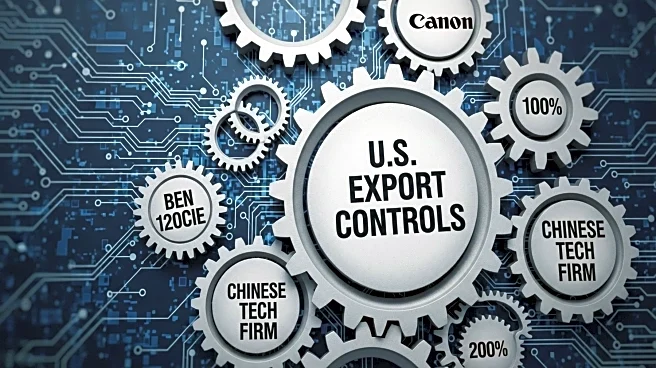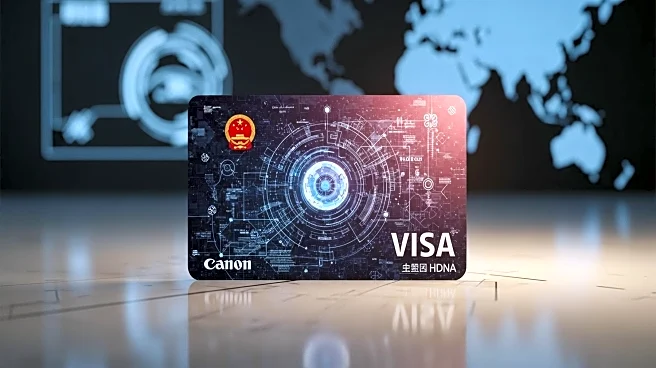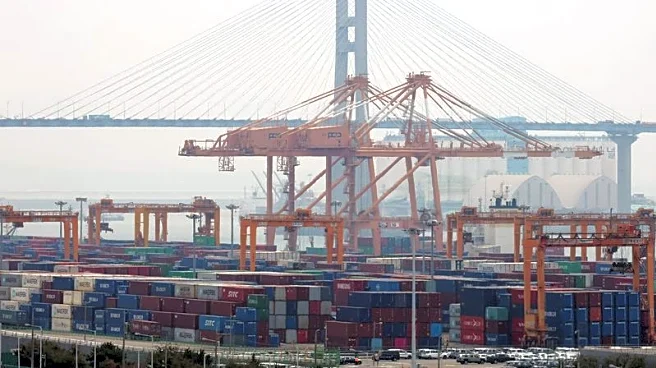What is the story about?
What's Happening?
The Trump Administration has intensified its restrictions on Chinese technology firms by expanding export controls to include subsidiaries of already sanctioned companies. This move aims to prevent these firms, such as Huawei, YMTC, and DJI, from circumventing existing export restrictions by channeling restricted technologies through their subsidiaries. The U.S. Department of Commerce stated that this new rule closes a significant loophole, affecting any subsidiary at least 50% owned by a firm on the export controls list. The expansion of these controls has drawn strong criticism from China, with a spokesperson from China’s Ministry of Commerce labeling the action as 'extremely malicious' and vowing to take necessary measures to protect Chinese companies. The announcement comes amid ongoing tensions between the U.S. and China, particularly in the technology sector.
Why It's Important?
This development is significant as it further strains U.S.-China relations, particularly in the technology sector, where both nations are vying for dominance. The expanded export controls could impact a wide range of industries, including artificial intelligence, semiconductors, and advanced robotics, which are crucial for future technological advancements. By tightening these restrictions, the U.S. aims to protect its national security interests and prevent the diversion of dual-use technologies for military purposes. However, this move could also lead to retaliatory measures from China, potentially affecting global supply chains and international trade dynamics. The decision underscores the ongoing geopolitical struggle between the two superpowers and highlights the complexities of managing international trade and security concerns.
What's Next?
The immediate implementation of these expanded controls could lead to significant disruptions for Chinese firms and their global partners. As the U.S. and China prepare for potential high-level discussions at the upcoming APEC summit, this issue is likely to be a point of contention. The U.S. may face diplomatic pressure to ease these restrictions, while China may seek to bolster its domestic technology capabilities to reduce reliance on U.S. technologies. The situation could also prompt other countries to reassess their trade and technology policies in response to the escalating U.S.-China tech rivalry.
AI Generated Content
Do you find this article useful?














